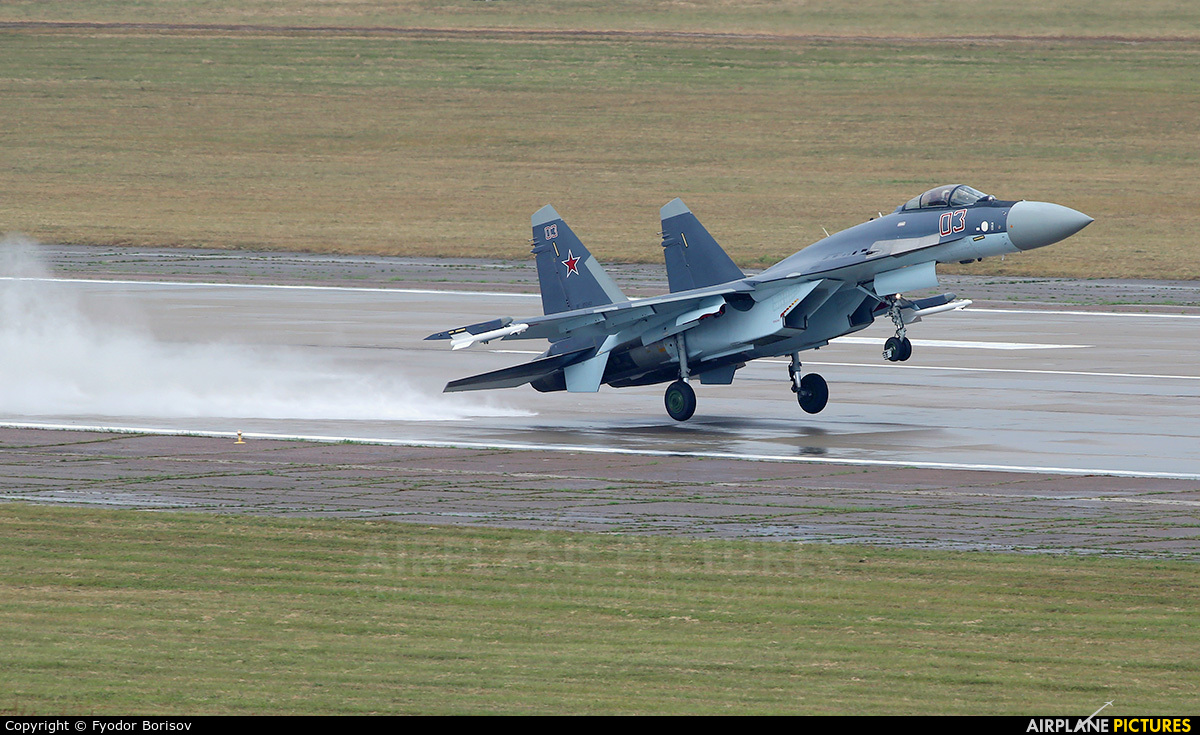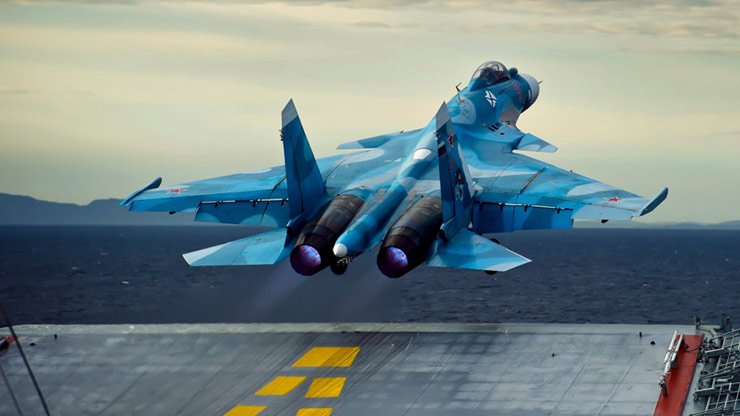The Sukhoi Su-35 is a single-seat, twin-engine, multirole fighter jet developed by Russia’s Sukhoi Design Bureau. It is an advanced derivative of the Su-27, designed to serve as a bridge between the fourth and fifth-generation fighter aircraft. The Su-35 features significant upgrades in avionics, engines, and airframe design, making it one of the most formidable fighters in the world.

Development and Design
The Su-35 was developed to enhance the capabilities of the Su-27, incorporating advanced technologies to improve performance, combat effectiveness, and survivability. The first prototype, initially known as the Su-27M, flew in June 1988. The modernized Su-35 variant, with further upgrades, first flew in February 2008.
Key Features:
- Wingspan: 14.75 meters
- Length: 21.9 meters
- Height: 5.9 meters
- Max Takeoff Weight: 34,500 kg
- Powerplant: Twin Saturn AL-41F1S afterburning turbofan engines
- Thrust: 142 kN (31,900 lbf) each with afterburner

Performance
The Su-35’s performance is characterized by its exceptional agility, speed, and endurance, making it highly capable in both air superiority and ground attack roles.
Specifications:
- Maximum Speed: Mach 2.25 (2,400 km/h, 1,500 mph) at altitude
- Range: 3,600 km (2,240 miles) without external fuel tanks; up to 4,500 km (2,800 miles) with external fuel tanks
- Service Ceiling: 18,000 meters (59,100 feet)
- Rate of Climb: 280 meters per second
Armament
The Su-35 is equipped with a diverse array of weaponry, allowing it to engage various types of targets with precision.

Armament:
- Gun: 1 × 30 mm GSh-30-1 cannon with 150 rounds
- Missiles:
- Air-to-Air: R-77 (AA-12 Adder), R-27 (AA-10 Alamo), R-73 (AA-11 Archer), R-37 (AA-13 Arrow)
- Air-to-Surface: Kh-31 (AS-17 Krypton), Kh-29 (AS-14 Kedge), Kh-38, Kh-59 (AS-13 Kingbolt)
- Anti-Ship: Kh-35 (AS-20 Kayak), Kh-31A (AS-17 Krypton)
- Anti-Radiation: Kh-31P (AS-17 Krypton)
- Bombs/Rockets: Various guided and unguided bombs, rockets, and other munitions, up to 8,000 kg on 12 hardpoints

Avionics and Technology
The Su-35 incorporates state-of-the-art avionics and systems, enhancing its operational capabilities and survivability.
Avionics:
- Radar: Irbis-E passive electronically scanned array (PESA) radar with a detection range of up to 400 km for air targets
- IRST (Infrared Search and Track): OLS-35 system for passive detection and tracking of targets
- Glass Cockpit: Modern multifunctional displays and head-up display (HUD)
- Fly-by-Wire Control System: Quadruplex digital fly-by-wire for improved maneuverability and safety
- Electronic Warfare Suite: Includes radar warning receivers, electronic countermeasures, chaff, and flare dispensers
Unique Features
The Su-35 has several unique features that distinguish it from earlier models and other fighter jets:
- Thrust Vectoring: 3D thrust vectoring nozzles allow for exceptional maneuverability, enabling the aircraft to perform advanced aerobatic maneuvers.
- Supercruise Capability: The Su-35 can sustain supersonic speeds without using afterburners, enhancing fuel efficiency and operational range.
- Enhanced Survivability: The combination of advanced avionics, electronic warfare systems, and reduced radar cross-section improves the aircraft’s survivability in contested environments.
Operational History
The Su-35 has been actively used by the Russian Air Force and has seen interest from several other countries. It has participated in various military operations, showcasing its capabilities in both air-to-air and air-to-ground roles.
Key Missions:
- Syrian Civil War: Conducted air superiority and ground attack missions, providing support to Russian and allied forces.
- Military Exercises: Participated in numerous international military exercises, demonstrating its advanced capabilities.
Conclusion
The Sukhoi Su-35 is one of the most advanced and capable fighter jets in service today. Its combination of speed, agility, advanced avionics, and powerful armament makes it a formidable asset in modern aerial warfare. The Su-35’s ability to perform a wide range of missions, coupled with its advanced technology, ensures its relevance and effectiveness on the modern battlefield.





